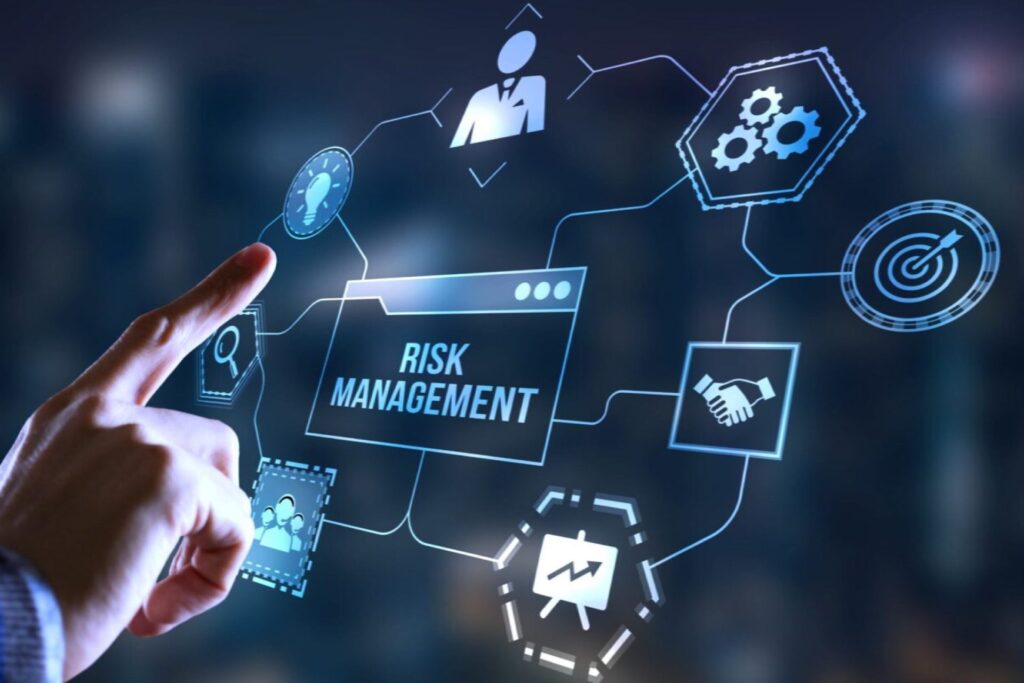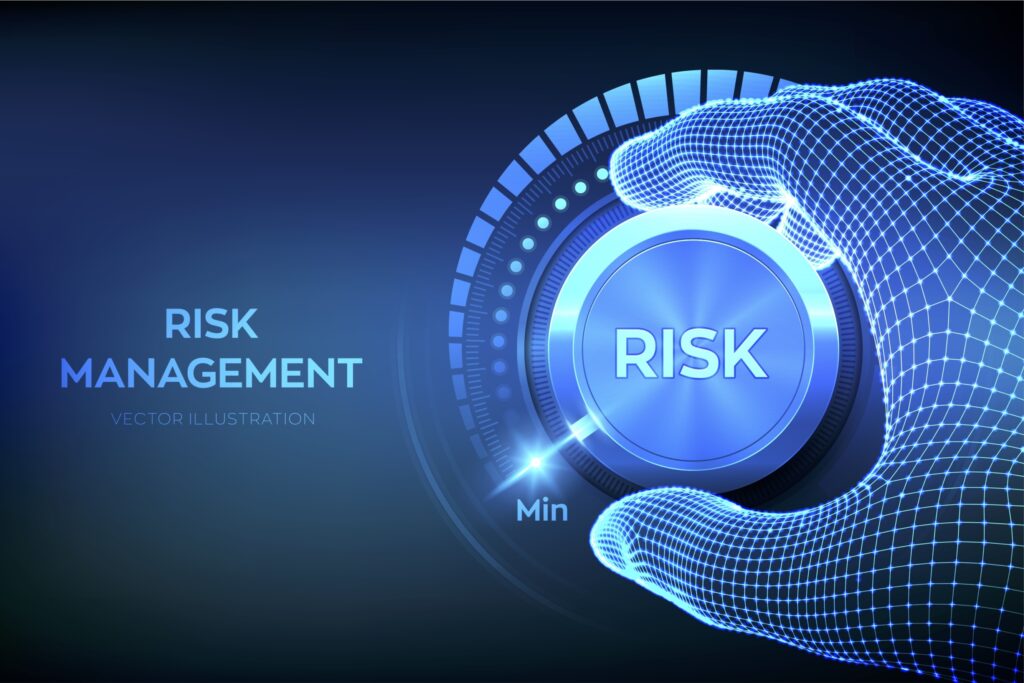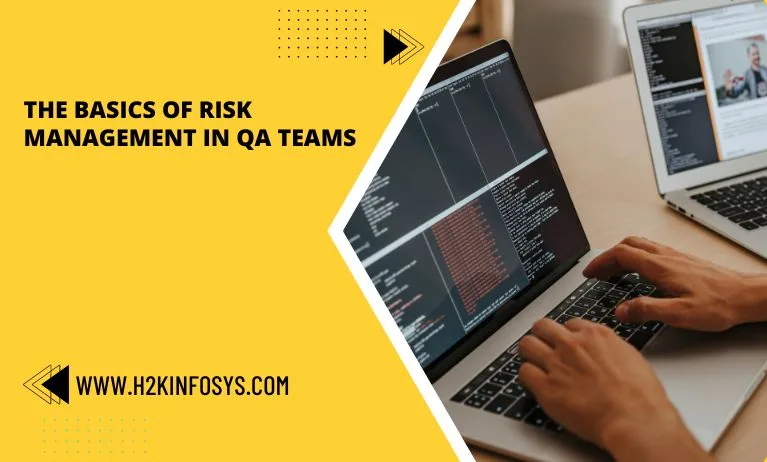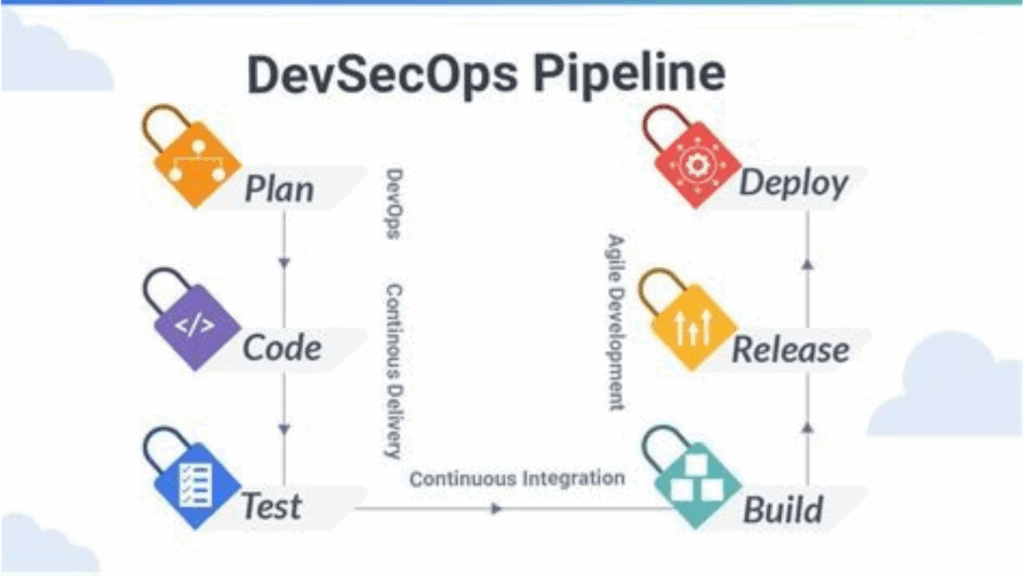The notion of management is employed in numerous contexts due to the wide range of factors it can take into account. Risk management in QA teams is one of the fundamental concepts in the IT industry that experts should be familiar with. Risks are present in all development endeavours, and understanding how to identify, assess, and mitigate these risks is essential for ensuring the quality and success of software projects.

To manage those risks, organizations need to develop efficient coping strategies. Risk management in QA teams is essential in this process, as it ensures that the potential risks affecting software quality are identified and addressed. Having stated that, a typical step-by-step risk management strategy calls for the recognition, investigation, subsequent evaluation, and treatment of unfavorable circumstances.
If done correctly, it prevents any detrimental impact on the procedures or their results. By integrating risk management in QA teams into the QA process, teams can mitigate the impact of identified risks and maintain high standards of quality throughout the development cycle.
Teams working on a project should consult stakeholders frequently since they have the final say over all choices when certain risks are present. The tough part is that each team and development phase has its own unique set of hazards in addition to the general pool. We’ll briefly discuss some of the typical issues a software testing company runs across in this article. Check out the Quality assurance software testing courses to learn more about QA.
What is Risk in Software Testing?
There are various definitions of risk that are based on various contexts and unique characteristics of software products. Every risk is, in a way, proportional to its likelihood and projected losses. As a result, the distinctions between the definitions depend on the setting, estimation, and measurement of a prospective loss.
The possibility and effects of a negative event, such as significant setbacks or financial losses, are combined to form risk.
The process of risk assessment seeks to provide answers to the following questions:
- What might occur?
- Why is it possible?
- What will happen as a result?
- What is the likelihood that this will happen?
- What elements can lower the risk’s likelihood?
- Does the danger seem reasonable or not?
- Will it need to be processed further?
How Should Risk Be Managed?
It would be simpler to define risk management in QA teams if the actions that make up this process were listed. In order to manage risk, your team must:
- Be aware of potential problems.
- Comprehend the significance of each issue.
- Rank the hazards according to the severity of the issue in declining order.
- Create and put into action preventative actions for the most serious problems.
- What elements can lower the risk’s likelihood?
- Verify the efficiency of the activities and ensure that the implemented measures are effective.
- Assess the overall quality of the work.
IT firms create risk management systems to control risk manifestation. These systems are designed to track progress toward attaining the determined corporate goals. Risk management in QA teams involves analyzing the statistics of their execution, evaluating the risk-related elements, and taking into account statistical data from the incident management process. By integrating risk management practices into the QA process, teams can proactively identify and address potential issues, ensuring the quality and success of the final product.
A risk management system aids in the development of risk mitigation strategies and the evaluation of their efficacy. Additionally, risk management in QA teams aids in maximizing the utilization of IT services on all fronts.
By applying risk management practices, QA teams can ensure that potential issues are mitigated early, optimizing resources and maintaining high-quality standards throughout the development process. This ensures that both the technical and operational aspects of the project run smoothly.
Not all IT firms have a continuous risk management system. The main cause is the enormous financial commitments needed to implement an extensive IT risk management system. The most active users of IT risk management systems are probably found in the banking, telecom, and finance sectors.
Because of worries about the safeguarding of sensitive data, the government has strong regulations governing these areas. Numerous companies in other sectors have also begun to address the link between business performance and IT risks and have acknowledged the significance of IT risk management.
Risk management in QA teams plays a crucial role in this context, ensuring that potential IT risks, particularly those related to software quality and security, are identified and mitigated before they impact the business. By incorporating risk management practices, QA teams help safeguard data integrity and maintain compliance with industry regulations.
Steps For Risk Management
Leaders of the team and the project should keep an eye on the risks at all times. The following phases make up the risk management process:
Leaders of the team and the project should keep an eye on the risks at all times to ensure that any potential issues are identified early and managed effectively. Effective risk management is an ongoing process that helps mitigate unforeseen challenges, ensuring smoother project execution and high-quality deliverables. The following phases make up the risk management process:
1. Risk Identification
The first step in managing risks is to identify them. This involves recognizing potential risks that could impact the project’s timeline, quality, budget, or scope. Risk identification is usually done through brainstorming sessions, stakeholder consultations, and reviewing past project data. Identifying risks early allows teams to prepare for possible obstacles.
2. Risk Assessment
Once risks are identified, it’s crucial to assess their potential impact. This phase involves evaluating the severity and probability of each risk occurring. By assessing risks, the team can prioritize them based on their potential effect on the project. High-priority risks are those that could cause significant damage or delays, and these should be addressed first.
3. Risk Mitigation
After assessing the risks, the next step is to develop strategies to mitigate or eliminate these risks. Mitigation strategies can include process changes, additional training, resource allocation, or adopting new technologies. The goal is to minimize the potential impact of the identified risks while ensuring project goals are met.
4. Risk Monitoring
Risk management is not a one-time activity but an ongoing process. Constant monitoring of risks is crucial to track whether mitigation measures are working and if new risks emerge as the project progresses. Regular reviews and status updates allow teams to make adjustments and stay on top of any developing issues.
5. Risk Communication
Communication is key to effective risk management. It is essential to keep all stakeholders informed about potential risks and the steps being taken to address them. Regular communication ensures that everyone is aware of any challenges, and it fosters a collaborative environment for finding solutions.
6. Risk Response
In some cases, risks may manifest despite mitigation efforts. In such instances, having a predefined risk response plan is critical. This phase focuses on how to react quickly and effectively to unexpected challenges. Having contingency plans in place ensures the team can pivot and maintain project progress even in the face of unforeseen issues.
By following these steps, teams can effectively manage risks, ensuring smoother project execution and higher chances of success. Risk management in QA teams provides a framework for anticipating potential obstacles and minimizing their impact, helping to deliver projects on time and within budget while maintaining quality standards. This proactive approach allows QA teams to identify and address risks early, ensuring that product quality is upheld and project goals are met without unexpected disruptions.

- Detection
- Analysis & prioritisation
- Planning
- Monitoring
- Correction
- Conclusions
The dangers must be frequently reevaluated because they may alter or develop over time. The plans for preventing and mitigating potential problems may need to be modified by the QA and development teams.
Common Risks In Qa & Testing Of Software
1. Poor customer communications
The greatest danger to a product is ineffective communication between the parties. Risk management in QA teams emphasizes the importance of clear communication to mitigate risks associated with misunderstandings or misalignment. By asking questions, maybe bad outcomes can be avoided.
A request for clarification at a particular point facilitates meeting deadlines and conserving important resources, ensuring that potential risks are identified and addressed promptly. Risk management in QA teams relies heavily on effective communication to identify and mitigate risks early in the process.
2. Regulations that frequently change.
A resource gap or exhaustion might occur as a result of too many changes in the needs. Risk management in QA teams helps mitigate this by identifying potential resource constraints early on and ensuring that teams are adequately staffed and funded.
It may have an impact on both human and financial considerations. Additionally, it compromises deadlines and product quality. By proactively managing risks, risk management in QA teams can minimize the impact of these changes, ensuring that projects stay on track and meet both quality standards and deadlines.
3. A poor sense of priorities.
Customers can place an undue emphasis on minor details, pushing important factors to the side. Risk management in QA teams helps address this issue by ensuring that the team focuses on the most critical aspects of the product. A team is forced to focus too much on the ancillary features while ignoring the primary function as a result.
Establishing product highlights early is an excellent approach. However, the primary functionality should come first. By identifying and mitigating risks related to feature prioritization, risk management in QA teams can ensure that essential functions are not overshadowed, maintaining product quality and aligning with customer expectations.
Conclusion
Software development in general and quality assurance in particular are both subject to risks on a regular basis. Being terrified of chances is therefore useless. While risks are inevitable, risk management in QA teams plays a crucial role in identifying and mitigating those risks early in the process, ensuring that the project remains on track.
Although the size and budget of the project have a significant impact on effective risk management techniques and scenarios, there are several strategies that any team can use. Risk management in QA teams includes approaches like continuous risk assessment, prioritization, and the implementation of preventive measures to minimize potential disruptions. These strategies ensure that risks are identified and addressed early, helping teams stay on track with their objectives regardless of project size or budget.
By proactively managing risks, risk management in QA teams can safeguard the project’s timeline, budget, and overall quality, even when unforeseen challenges arise. Effective risk management allows teams to embrace change while keeping the project aligned with its goals and objectives.
By integrating risk management in QA teams into the QA process, teams can effectively mitigate risks, ensuring that both the product’s quality and the project’s success are maintained throughout development.
Hold frequent meetings, distribute information, and inspire everyone on the team to remain on the same page. Risk management in QA teams plays a crucial role in ensuring clear communication and alignment. It will facilitate prompt problem-solving without letting risks cause any severe disruptions.
By fostering collaboration and transparency, QA teams can quickly identify potential issues and mitigate them before they escalate. A good online QA training platform will explain the risk assessment involved in QA.






























